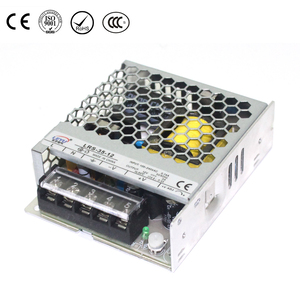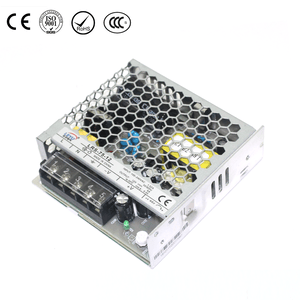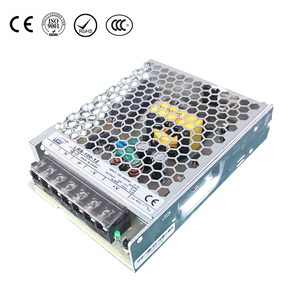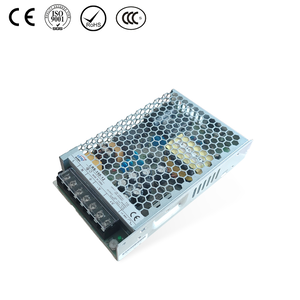An Engineer’s Handbook to Designing Switching Power Supplies
Date:2025-05-21 03:25:57 Visit:595
Switching power supplies are used in many devices, but not everyone knows what they do. They are essential for modern electronics, powering phones, computers, and industrial machines.
To begin with, it’s important to understand how power supplies work and why they matter. They convert electrical energy into a form that devices can use, helping them run efficiently and reliably.
This handbook is great for engineers. It shows the main parts, principles, and problems when designing these supplies. Keep reading and learn about this important engineering tool.
Understanding Switching Power Supplies
They are made to solve the problems of linear power supplies, like needing big transformers and having poor voltage control. Using switching regulators, these power supplies can change input voltage into a stable output voltage with better efficiency and smaller size. They are made to solve the problems of linear power supplies, like needing big transformers and having poor voltage control. Using switching regulators, these power supplies can change input voltage into a stable output voltage with better efficiency and smaller size. Using switching regulators, these power supplies can convert input voltage into a well-managed output voltage with higher efficiency and smaller form factors. The design employs a chopper to generate a high-frequency pulse, minimizing size and energy losses. As a result, switching power supplies are compact, cost-efficient, and provide high performance, making them indispensable in many electronic applications.
Definition and primary function
A switched-mode power supply (SMPS) is essential for efficiently changing electrical power from AC or DC sources. It uses a switching regulator, a key part of controlling energy conversion. This regulator helps send power to DC loads while adjusting the voltage and current. Unlike linear power supplies, the SMPS switches quickly between states that lose less energy. So it reduces power losses a lot. Its design works with different power systems worldwide without needing manual changes, making it easier to use than traditional linear power supplies. These features make switching power supplies a common choice for users who need low-cost, small, and energy-saving solutions.
Importance of electronic devices
Switching power supplies are essential in electronic devices because they give steady direct current to parts like integrated circuits and microcomputers. They fix the problems of linear power supplies, making devices lighter and smaller. They manage more power efficiently in high-power situations, helping devices run reliably. Converting AC voltage from utility sources to the required DC voltage enables consistent and efficient operation of electronic devices. Their high efficiency and reduced size are vital for the design and functionality of modern devices, driving progress in power solutions across many fields.
Core Components of Switching Power Supplies
Switching power supplies are different from their linear counterparts. They use semiconductors, such as transistors and MOSFETs, to convert rectified current into a pulse wave. They change AC voltage from power sources into the needed DC voltage, making electronic devices work steadily and efficiently. Their high efficiency and smaller size are essential for designing modern devices and help improve power solutions in many areas. Additional components are needed compared to linear power supplies. They are often found in DC/DC converter applications, especially in industrial settings. Also, in specific lighting applications, they are called electronic transformers.
Transformers and Inductors
Transformers and inductors are essential parts of switching power supplies. They work at high frequencies, often in the tens or hundreds of kilohertz. This high frequency allows the use of smaller transformers, which lowers magnetic losses and makes them lighter and smaller. The voltage at a transformer's terminal depends on the core size, magnetic flux, and frequency. Higher frequencies allow smaller cores. This makes them smaller and cheaper than traditional linear transformers, which work at 50/60 Hz. Electrical isolation is often needed in off-line converters. Here, smaller high-frequency transformers are helpful. By using these high frequencies, transformers in switching power supplies get smaller and cost less.
Capacitors and Diodes
Capacitors and diodes play essential roles in switching power supplies. Capacitors store energy when the mains voltage is lower than the voltage across them. When the mains voltage exceeds this voltage, current is drawn in short pulses. This creates a higher harmonic content in the input current, resulting in a low power factor. High harmonic content can add extra load to utility lines. It can lead to increased heat in building wiring and transformers. Filters can remove these harmonics. However, these filters tend to be expensive. Thus, balancing cost and performance is key when dealing with capacitors and diodes when switching power supplies.
Transistors and Switches
Transistors and switches are essential in the design of switching power supplies. Semiconductors, like transistors or MOSFETs, drive the high-speed switching that changes rectified current into a pulse wave. This switching improves electrical efficiency by reducing energy waste. Transistors enable switching power supplies to toggle between high and low dissipation states effectively. This is why they are more efficient than linear regulators. Linear regulators dissipate more power, while transistors minimize it. The clever design of these transistors is vital for achieving high power efficiency. Also, they help make switched-mode power supplies smaller.
How Switching Power Supplies Work
Switching power supplies are essential for many electrical devices. They change electrical power efficiently to give a steady output voltage. They do this by using a switching regulator. These power supplies differ because they use pulse width modulation (PWM). This technique helps maintain constant voltage by changing the switch's time on and off. As a result, switching power supplies are more efficient than linear power supplies. They also use power factor correction circuits. These circuits reduce problems in the power grid. This can be active or passive. Modern designs, like zero-voltage switched-mode power supplies, are very effective. These require small heat sinks. This is because less energy is lost as heat. So, these supplies can deliver more than 1 kilowatt of power while being compact. They also handle challenges in operational stability by adjusting control loop behaviors.
Basic operation and conversion process
Switching power supplies work by changing AC voltage into DC voltage first. This is different from linear power supplies. Linear ones change AC voltage levels directly using transformers. After rectifying the AC input, the DC voltage is broken into a high-frequency pulse. A part called a chopper is key to this. It makes the power supply efficient and the voltage stable. Components like transistors and MOS FETs play a significant role. They quickly turn the current on and off. This process creates pulse waves from the rectified current. Switching power supplies often use a high-frequency transformer to help change voltages. This makes them different from linear power supplies, which need big transformers. Pulse Width Modulation, or PWM, is a key way to control switching power supplies. It helps keep the output voltage steady by changing how wide the pulses are in the signal.
Pulse Width Modulation (PWM) method
Pulse Width Modulation, or PWM, is a key control method in switching power supplies. It helps keep the output voltage steady. PWM works by changing the width of the pulses in a signal. This timing control keeps the voltage stable. There are different types of switching power supplies that use PWM. These include buck, boost, forward converter, and flyback topologies. Using PWM makes switching power supplies more efficient and smaller than linear ones. However, PWM can also create high-frequency noise. This noise is a side effect of switching actions. Despite this, PWM remains a preferred technique for ensuring efficiency in switching power supplies.
Input Rectification Process
A switching power supply starts by turning AC voltage into DC voltage. This is called input rectification. First, the AC (alternating current) is changed into DC (direct current), which is needed for the rest of the process. You can think of this DC voltage as steady, like the voltage from a battery. Rectification is crucial because it sets the stage for the subsequent voltage conversions achieved through high-speed switching and high-frequency transformers. The rectifier circuit might have a voltage doubler in some power supplies, like computer ATX models. This helps the power supply work with different input voltage levels to produce an unregulated DC voltage.
Converting AC to DC
AC/DC switching power supplies have a specific way of converting AC power to DC power. It involves several stages. One key stage is input rectification, where a diode bridge converts the AC mains voltage into a DC waveform. After this, a capacitor is usually added to smooth out any ripple in the DC voltage. Then comes power factor correction. This step is essential because when current goes through the rectifier, it becomes uneven, adding extra harmonics to the current. Unlike linear power supplies that use transformers first, switching supplies immediately carry out rectification. After rectifying the current, a high-frequency transformer, which relies on semiconductor-based switching actions, converts the voltage to the desired level.
Tools and techniques used
Switching power supplies use advanced tools and methods. Semiconductors like transistors and MOSFETs help in high-speed switching actions. These actions are necessary to convert the rectified current into a pattern of pulses. The pulse width modulation (PWM) method helps control how long the current flows by adjusting the timing. This is key for keeping the voltage stable. A special component called a chopper transforms the input voltage into high-frequency pulses. These power supplies, known as electronic transformers in some lighting applications, are helpful as low-voltage sources. The overall approach of these power supplies is called switch mode. This name is now linked to Motorola's trademark SWITCHMODE.
Power Factor Correction (PFC)
Power Factor Correction, or PFC, is key in switched-mode power supplies. These supplies are used in many modern devices like computers and TVs. They must follow international standards to control the harmonics in the AC input current. One such standard is the IEC 61000-3-2, which focuses on reducing power quality issues. Active PFC, which includes a switching boost converter, is the only way to design power converters that are both efficient and compact enough to meet current standards. A PFC stage is often included in these supplies to meet strict requirements on harmonic emissions. While passive PFC uses filters for harmonics, it is less effective than active PFC. Particularly in the EU, the standard IEC 61000-3-2 requires equipment over 75 W to minimize harmonics up to the 40th order. This ensures better energy efficiency and compliance.
Importance of PFC in energy efficiency
Power factor correction is vital in switching power supplies. It reduces the number of harmonics injected into the power grid. Active PFC can raise the power factor in these supplies to better than 0.99, making it much more effective than passive methods. In the EU, regulations sometimes require PFC to manage harmonic distortion. Passive PFC circuits use low-pass filters. These filters target and limit higher-frequency harmonics. PFC helps stabilize power factor issues, which are usually caused by current spikes and distortion in power grids.
Methods to achieve effective PFC
Good Power Factor Correction in switching power supplies means reducing harmonics, which helps improve power quality. Active PFC methods change the current shape to match the AC input voltage's wave, effectively correcting the power factor. Passive PFC circuits do this with low-pass filters. They aim to eliminate high-frequency harmonics but may not meet strict regulations for high-power uses.
Switching power supplies with active PFC can operate over a wide input voltage range. They are auto-ranging and do not need a manual voltage selector switch. Active PFC is helpful in reducing high-frequency energy pulses, which often happen near the AC voltage peaks and are a common reason for low power factor. Using active PFC in power supplies helps maintain efficiency and meet international rules.
Isolation in Switching Power Supplies
Isolation in switching power supplies is vital. It makes sure the input and output have no physical connection. This is done using transformers. Transformers provide galvanic isolation. They separate input from the output in the circuit. This separation is key in many situations. Such power supplies usually need more parts because of this. Those parts make them more complex. Non-isolated power supplies are simpler. They use inductors instead of transformers for energy transfer. Understanding these differences shows why isolation is so important.
Differences between isolated and non-isolated supplies
Switching power supplies come in two main types: isolated and non-isolated. Isolated supplies use transformers for input-output separation. This makes them safer and more suitable for more sensitive applications. Non-isolated supplies, on the other hand, do not use transformers. They have inductors instead. Inductors are part of designs like boost, buck, and buck-boost converters. This design is less complex and can be more cost-effective. The choice between these types often depends on the need for safety and how critical input-output separation is. If separation is crucial, isolated designs are preferable. Non-isolated options are good when simplicity and cost are priorities.
Safety and noise considerations
Switching power supplies often generate high-frequency noise. This noise comes from these power supplies' pulse width modulation process. The harmonics in the input current can be problematic. They may cause extra heating in building wires and utility transformers. This can be challenging for applications that need lower noise levels. Filters help reduce harmonics but can be costly. Careful component selection is critical in designs requiring stability, like emergency or aircraft systems. This approach helps manage noise and maintains safe operations.
Design Considerations for Efficient Power Supplies
Switching power supplies are liked because they are very efficient. They use pulse width modulation (PWM) to adjust the voltage. This helps cut down power waste. Unlike linear power supplies, they turn transistors on and off quickly. This reduces power loss and makes them more efficient. Different types like buck, boost, and flyback are used to fit various output power needs. Even though they are complex, these power supplies give good load and line regulation. They can raise or lower the voltage when needed. The main benefit is their ability to efficiently change AC voltage to DC voltage using smaller transformers. This makes them a good choice for small electronic devices, even if they need more advanced controls and ways to reduce noise.
Thermal management and heat dissipation
Switching power supplies are built to be efficient and compact. So, managing heat is crucial to prevent overheating. Zero-voltage switched-mode power supplies are helpful here. They need smaller heat sinks because they lose less energy as heat. This makes thermal management easier. However, the complex circuits and their need for noise cancellation can make managing heat challenging. Efficient conversion of electric power minimizes energy lost as heat. This means cooling solutions can be smaller. But parts like transistors and MOS FETs get hot while switching. So, proper thermal management is necessary to keep everything working well.
Selecting appropriate components
Picking the right parts is very important for a switching power supply. Semiconductors like transistors and MOSFETs help with fast switching. They work with PWM by changing the timing of current pulses to keep the voltage steady. High-frequency transformers help turn the pulse wave voltage into the needed voltage levels. Pass transistors in these supplies are crafted to lower energy loss. They switch between states that lose less energy. The parts in the design must work together to manage the input voltage. This includes turning it into DC and cleaning the signal before making high-frequency pulses. Picking the right parts helps the power supply work well and last longer.
Addressing Common Design Challenges
Switching power supplies are known for their efficiency and small size. They solve many issues found in linear power supplies. Without needing big power transformers, they get smaller and lighter. This makes them ideal for many applications. Switching regulators in these power supplies use pulse width modulation techniques. This leads to high efficiency. Even though the design is more complex, it benefits from integrated circuits. These help form a compact design. Still, some areas need attention. For instance, they may produce high harmonic content. Such issues affect utility infrastructure. The way switching power supplies stabilize input voltage is different. They change the voltage into a high-frequency pulse train. This is not the same as how traditional linear power supplies work.
Minimizing Electrical Noise and Interference
Due to their complex design, switching power supplies have to manage noise and interference. High-frequency energy generated can lead to electromagnetic interference, also known as EMI. Effective low-pass filtering is needed to handle this. When costs are cut too much, some cheap power supplies may cause issues. They might send electrical noise back to the mains power line. This could interfere with other devices. Components like transistors and MOS FETs are used in power supplies. They convert rectified current into a pulse wave. Handling electrical noise relies heavily on these components.
Additionally, there is more harmonic distortion if a power supply is not power-factor-corrected. Therefore, noise levels in the electrical system may rise. So, using the proper methods is essential. PWM, or pulse width modulation, helps by changing the timing of the current. This keeps the voltage steady and also helps reduce noise and interference.
Managing Load Regulation and Stabilization
Switching power supplies use a switching regulator to control load regulation. This helps the system run efficiently, control the load, and keep the output stable when the load changes. PWM also supports this by adjusting the timing of the pulses. Even though it causes high-frequency noise, it keeps the output voltage steady.
Different designs, like buck and boost converters, are used for different power needs. This makes the power supply flexible and able to handle changing demands. Safe control is essential because the circuits are complex. Safety and good performance are both paramount.
Many switching power supplies have built-in parts like power converters and controllers. These parts help make load control easier and improve the power supply's performance.
Applications of Switching Power Supplies
Switching power supplies are vital in many fields because they are efficient and smaller than linear ones. They work great in high power and high current applications. Industries use them in areas like electroplating, anodizing, and electrolysis. Telecommunications require these power supplies to distribute large amounts of power at lower direct current voltages. They are used in systems like mobile stations and network equipment. These power supplies perform well in environments needing stability and minimal voltage changes. Their adaptability to high-frequency operations also makes them ideal for aviation and marine applications.
Usage in Consumer Electronics
Switching power supplies are very popular in consumer electronics. This happens because they are more efficient and smaller than linear power supplies. These power supplies use a switching regulator to convert electrical power. Devices like transistors and MOSFETs help to manage these conversions at high speeds. This makes the design compact for various gadgets. Pulse width modulation adjusts the pulse area for stable voltage. This helps keep electronic devices working well. The design of these power supplies uses accurate circuits and filters. Because of this, they work well in devices like personal computers.
Role in Industrial and Medical Equipment
Switching power supplies are essential in industrial automation. They give compact and efficient power for complex machines. In telecommunications, they help provide enough power at lower DC voltages. They use DC/DC converters for special needs. In medical equipment, they give steady and reliable power for sensitive tools. Their complexity is higher compared to linear supplies. This complexity makes them valuable where performance and size matter. Companies like MEAN WELL offer many types of power supplies. This shows how important they are in both industrial and medical fields. Both areas depend a lot on these power solutions.
Future Trends in Power Supply Design
Switching power supplies are key to making electronic devices smaller and more efficient. They have surpassed traditional linear power supplies. Switching regulators use pulse width modulation to convert energy efficiently, resulting in better power conversion.
AC/DC switching power supplies change AC voltage to DC smoothly. They use steps like input rectification and power factor correction. This helps manage nonlinear currents. Even with a complex design, switching power supplies offer simple, efficient power solutions. They use advanced control circuits and noise cancellation.
Future trends in power supply design focus on better efficiency and smaller size. Digital devices need stable DC power, so designers work to meet these demands. New ideas aim to make switching power supplies even smaller and more efficient, helping devices work better.
Here are some key future focus areas:
- Higher efficiency
- Smaller size
- Steady DC voltage output
- Better power conversion methods
Overall, switching power supplies keep improving to meet the needs of today’s electronic devices.




-134213.jpg)



